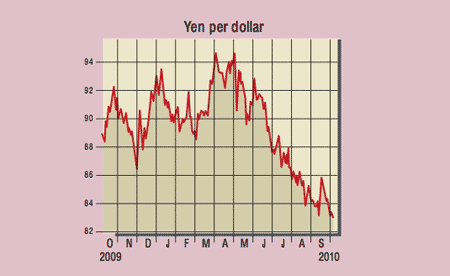
The Bank of Japan (BoJ) gave markets a jolt this week – by announcing a “comprehensive monetary easing package”. It cut its main interest rate from 0.1% to a range between 0 and 0.1% and promised to maintain its “virtually zero-interest-rate policy” until deflation has been defeated. It also said it would consider buying public and private-sector assets, ranging from government and corporate debt to ETFs. The aim is to bring down long-term interest rates and shore up the economy. This would all amount to US and UK-style quantitative easing (QE). Global stocks bounced on the news, while the yen fell against the dollar before clawing back all its losses.
What the commentators said
No wonder the BoJ felt it needed to make waves, said Mure Dickie in the FT. The recovery is losing steam, with industrial production and business confidence sliding. The strong yen is undermining exports. However, as central bank activism goes, this is pretty small beer, says the FT. “Few will notice” that rates are now between 0 and 0.1%, rather than 0.1%. And “to call the asset purchase programme a drop in the bucket is to belittle the drop”.
The buying programme would be worth ¥5trn, while the amount of government debt and corporate debt outstanding is ¥700trn and ¥54trn respectively. Meanwhile, the US is set to embark on another big round of QE, which is likely to weaken the dollar. So the BoJ’s move will do little for the yen, said The Economist.
The reason markets were impressed is that the BoJ has been repeatedly criticised for being far too passive in the face of deflation and stagnation. Set against the way it had “resigned itself to the sidelines”, this latest move “appears almost radical”, said the FT.
It’s the symbolism that counts, agreed Ian Campbell on Breakingviews. Japan is “trying harder” to conquer deflation and stagnation – “and doing it with monetary policy, not still more fiscal spending”.
QE, and especially its apparently imminent resumption in the US, is the dominant theme in the markets. Just about everything except the dollar is on the rise in the hope of yet more liquidity providing a “strong support for risk assets”, as Divyang Shah of IFR Markets put it. QE could well do this (see page 9), although the danger is that the gains evaporate quickly. The first round of QE didn’t work, as we noted last week, and the chances of the second working aren’t great. Once the markets twigged that the Fed is “pushing on a string”, said John Mauldin on Investorsinsight.com, “it would not be pretty”.